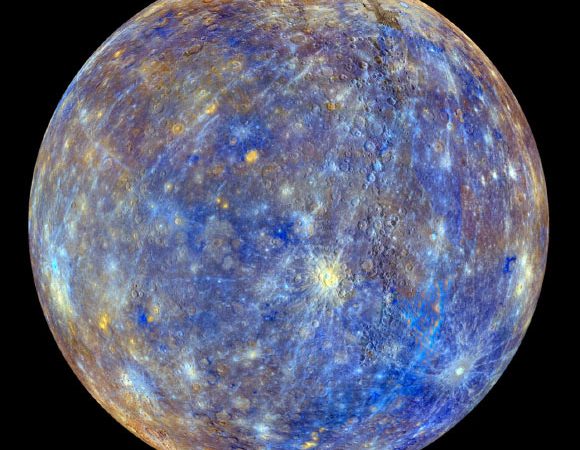In 2011, NASA’s MESSENGER orbiter detected signals typical of glacial ice near the poles on Mercury. The ice was dingy and lurked in permanent shadows in numerous polar craters. According to new research led by Georgia Institute of Technology researchers, the extreme heat on Mercury, where daytime temperatures reach 400 degrees Celsius (750 degrees Fahrenheit), helps make some of that ice.
Source: Sci News
“As with Earth, asteroids delivered most of Mercury’s water, the scientific consensus holds. But the extreme daytime heat could be combining with the minus 200-degree Celsius cold in nooks of polar craters that never see sunlight to act as a gigantic ice-making chemistry lab,” said Georgia Tech’s Professor Thomas Orlando, senior author of the study.
The chemistry is not too complicated. But the new study models it onto complex conditions on Mercury, including solar winds that pelt the planet with charged particles, many of which are protons key to that chemistry.
The model presents a feasible path for water to arise and collect as ice on a planet rife with all the necessary components.
“This is not some strange, out of left field idea. The basic chemical mechanism has been observed dozens of times in studies since the late 1960s,” said Georgia Tech’s Dr. Brant Jones, first author of the study.
“But that was on well-defined surfaces. Applying that chemistry to complicated surfaces like those on a planet is groundbreaking research.”
Minerals in Mercury’s surface soil contain what are called hydroxyl groups (OH), which are generated mainly by the protons.
In the team’s model, the extreme heat helps to free up the hydroxyl groups then energizes them to smash into each other to produce water molecules and hydrogen that lift off from the surface and drift around the planet.
Some water molecules are broken down by sunlight or rise far above the planet’s surface, but other molecules land near Mercury’s poles in permanent shadows of craters that shield the ice from the Sun.
Mercury does not have an atmosphere and thus no air that would conduct heat, so the molecules become a part of the permanent glacial ice housed in the shadows.
“The total amount that we postulate that would become ice is 1013 kilograms over a period of about 3 million years,” Dr. Jones said.
“The process could easily account for up to 10% of Mercury’s total ice,” Professor Orlando said.
The team’s paper will be published in the Astrophysical Journal Letters.
Source: Sci News

































Leave a Comment
You must be logged in to post a comment.